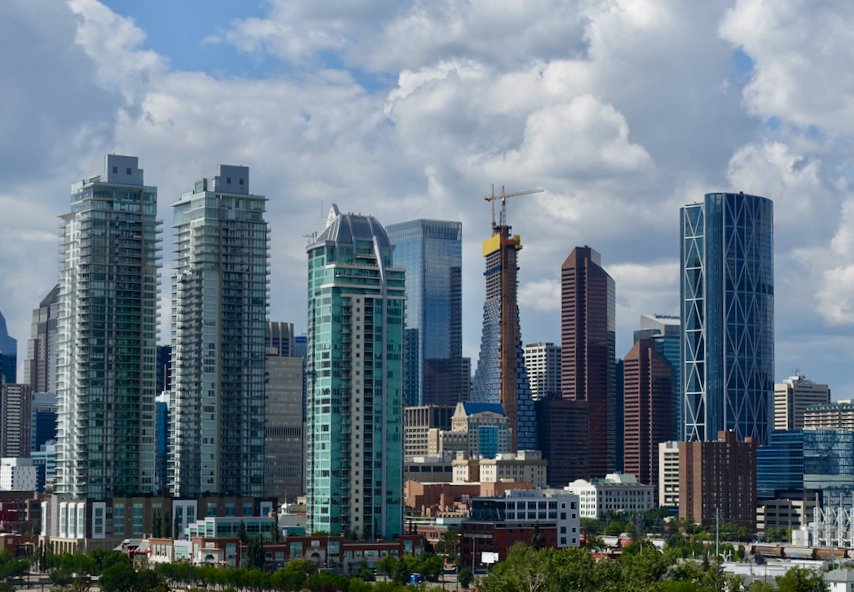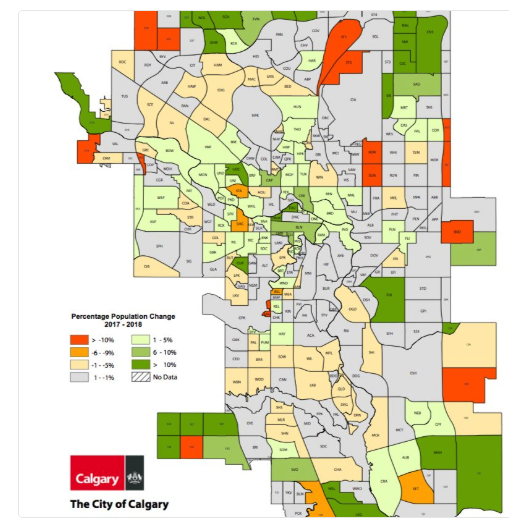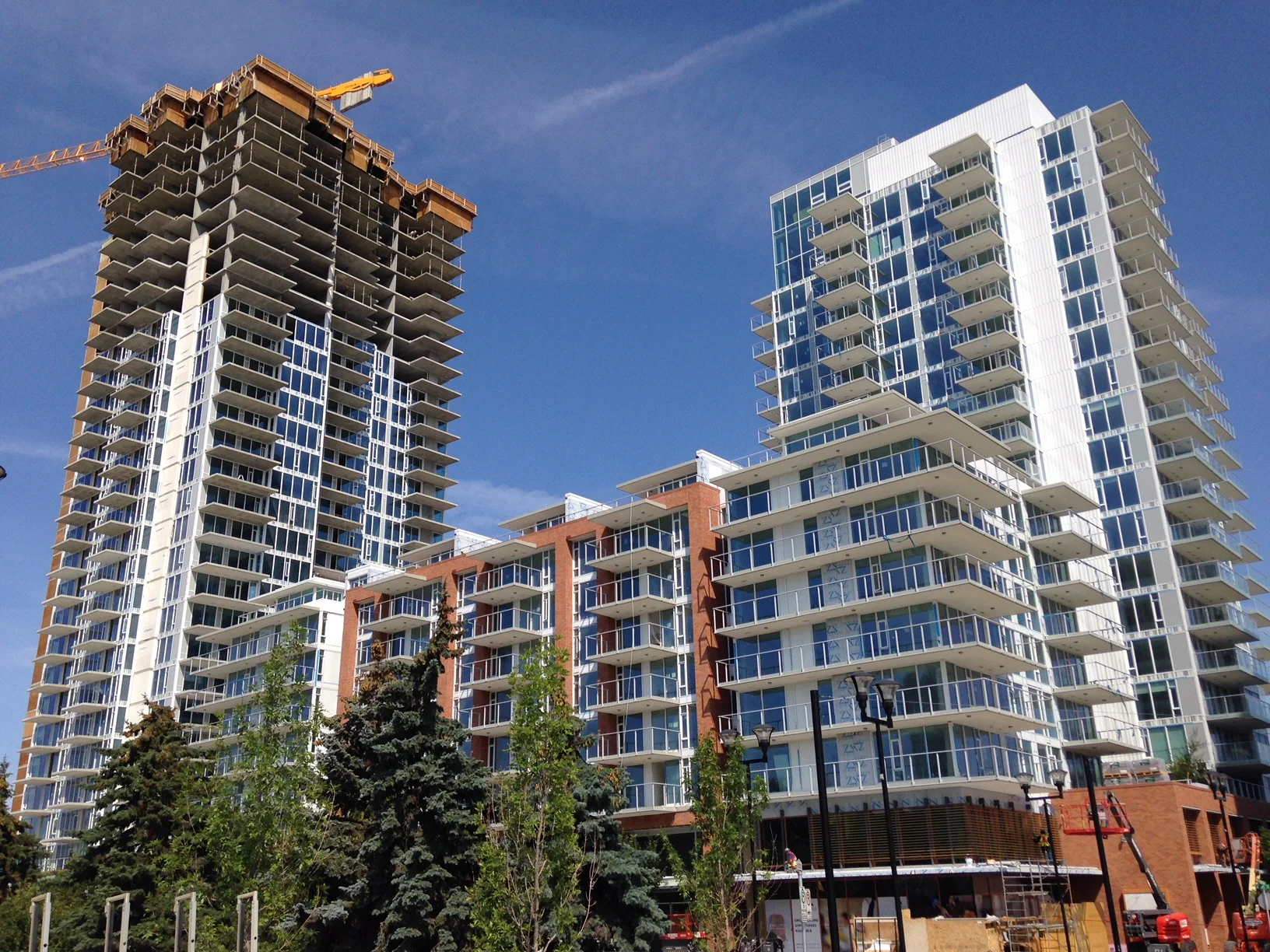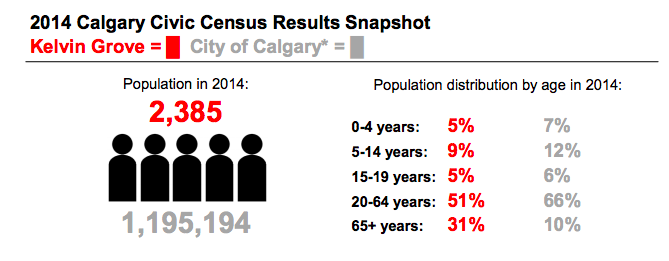Suburban Sprawl: Birth/Death Differential & Managing Growth
The key to city building is linking vision with the realities of the current market, economy and desired quality of life, as well as anticipating the future. It aint’ easy.
In Calgary, numerous residential towers are now an integral part of the urban skyline.
Downtown Towers Not Enough
Recently David Gordon, The School of Urban & Regional Planning at Queen’s University published the report, “Still Suburban – Growth in Canada Suburbs, 2006 to 2016.” The key finding was “the population of Canadian auto-dependent communities are growing much faster than the national growth rate, which is significant to note when implementing policies guiding public health, transportation, education planning, political decisions, and community design.”
This is happening despite the efforts of every major Canadian city to develop planning policies to encourage the densification of inner-city communities. The report states, “In all our largest metropolitan areas, the portion of suburban residents is over 80%, including the Vancouver, Toronto, and Montreal. Their downtowns may be full of new condo towers, but there is five times as much population growth on the suburban edges of the regions.”
Calgary's Beltline's streets are lined with new residential buildings with several more under construction. It is one of the City's fastest growing neighbourhoods.
Calgary is #1
The same is true for Calgary, where dozens of new condos and thousands of infill homes have been completed in our inner-city communities since 2006, yet the vast majority of our growth has been in the ‘burbs. In fact, Calgary has the dubious ranking of being Canada’s leader in suburban growth with 91% of our growth being in the suburbs; followed by Edmonton at 90%, Montreal 84%, Toronto 83%, Vancouver 79% and Ottawa 74%.
Recent Calgary population growth indicates that many of the communities near downtown are experiencing healthy population increases i.e. green areas.
Is Calgary an urban densification leader?
In fact, I contacted Gordon early this year to see if he could confirm my hypothesis that “Calgary was Canada’s leader when it came to urban densification on a per capita basis.” This hypothesis was based on the numerous new urban village projects at various stages of development in Calgary: Garrison/ East Village / University District / Brentwood Station / Bridges / Currie / West District / Quarry Park / SETON. Garrison Woods and Garrison Green alone added 5,000+ new residents in the early ‘00s.
As well, the dozens of condos have completed, under construction or approved for the Beltline, Kensington, Inglewood and Marda Loop. In fact, the 2017 Census showed the Beltline had the largest population increase of any Calgary community and that many of Calgary’s inner-city communities are indeed experiencing good population growth. Perhaps, this is due in part to the 5,000 new infill homes (15,000 people at 3 people per home) in Calgary’s inner-city communities over the past five years. That is the equivalent of building two new Aspen Wood neighbourhoods.
While I realize these projects were in their infancy from 2006 to 2016, I was hoping Gordon might have some stats and projections based on planned urban densification projects for Canadian cities.
Gordon responded with “As an urban designer, I find the infill projects like the Bridges, East Village, Currie /Garrison Woods, University District and Brentwood to be fascinating and follow them closely. But our research has forced me to look again at overall patterns of metropolitan growth. And across Canada, the population of every metropolitan area was growing many times faster at the edges than by infill. Even our poster child for urbanism, Vancouver, has over 86% of its population growth occurring at the edges from 2006-2011.”
This didn’t answer my question, however, it did get me to rethink how we measure and think about inner-city and suburban growth.
The Bridges project continues to add new urban homes for Calgarians including many families.
Calgary's East Village project will add 10,000+ new residents to the downtown over the next 10 years.
Birth/Death Differential
Intuitively, I sensed we need to look at the population growth differently to understand what is happening. This led me to examining how the birth and death stats for suburbs vs inner-city might factor in. I contacted the City but they don’t track birth by new suburbs (developingcommunities is the City’s term) vs established communities (developedcommunities is the City’s term). A quick look at the demographics of new suburbs vs established communities and you quickly realize there is a huge difference that puts developed communities at a HUGE disadvantage when it comes to population growth.
I decided to do some math.
Each year Calgary has about 16,000 births, so let’s assume 70% of the births are in the newer communities or about 11,000, compared to only 5,000 in older communities. This means every year the new communities grow twice as fast without building a single home.
Calgary averages about 5,500 deaths each year. If we assume 90% of the deaths each year are from established neighbourhoods (where the vast majority of the old people live) this means collectively they will decline by 5,000 people each year. Ironically, this is offset by the 5,000 births, so our inner-city’s natural population growth is neutral.
Contrastingly, in new suburbs, there are 11,000 births and only 500 deaths, so the natural population increase is 10,500, about 50% of Calgary’s 21,000 population growth migration accounted for the other 10,500) last year (2017 Census).
This is pretty rough math, but it demonstrates urban sprawl when measured by population growth is significantly skewed in favour of the new suburbs (whoops, developing communities).
City of Calgary Community Profiles illustrates how new communities like Cranston have significantly higher numbers of children (red numbers) and less seniors than the city average (grey numbers).
Many older communities have less children and significantly more seniors.
Affordability Factor
The inner-city is also at a huge disadvantage in attracting population growth compared to new suburbs as a result of affordability. In 2014, I posted a blog documenting that 80% of Calgarians can’t afford to live in the inner-city where the land costs are many times higher than in a developing community. The cost of a home in an inner-city duplex can cost a million dollars and cost of a lot $300,000.
The cost of community engagement, complexity and uncertainties of the approval process also increases the cost of inner-city houses and condos. Affordability is a huge reason why not only Calgarians, but most Canadians HAVE to live in the new urban suburbs.
Until, Calgary (or any city) can provide equivalent housing at similar costs in older suburbs, as they can in new suburbs, most of our population growth in our city will be at the edge. The issue is land economics and demographics, not urban design and planning.
New master planned communities have a diversity of housing from low rise condos to row housing to estate homes. The master plan also integrates future employment and retail districts, as well as present and future transit oriented living.
New Suburbs Are Not Evil
It should also be recognized new suburbs are not evil like those of the middle to late 20thcentury with their sea of cookie cutter homes and little else. New communities like Quarry Park, SETON and Providence are designed as “live/work/play” communities with a mix of housing (singles, towns, row and condos) with employment districts, as well as, retail, restaurant and recreational amenities all strategically located.
They are designed to foster walking, transit and cycling as much as possible. In fact, Brookfield Residential’s Livingston neighbourhood will have 96% of its homes within 300m of a transit stop and a density on par with Hillhurst/Sunnyside.
Indeed, Calgary’s new master-planned communities are a hybrid of the low-density, big box suburbs and the mixed density, main street urban villages of the future. While they aren’t perfect (no community is) they reflect the needs of today’s families for a community that has most of its amenities just a short drive away and in some cases within walking and cycling distance. And is affordable!
Typical '50s or '60s street with single family, single story homes are large lots. While many once housed 6+ people today they are home for one maybe two people.
Streetscape in the new community of Livingston has two story homes on much smaller lots than those built 50+ years ago. This looks like inner-city communities without the trees.
Last Word
Studies like Gordon’s don’t help us understand the complexities of city-building and managing urban growth. The media loves to grab these studies and create a sense the “sky is falling.” That simply is not true.
In reality Calgary and all Canadian cities are evolving to become more densified and more transit, walking and cycling friendly. However it is too quickly for some and too slowly for others.
While Calgary like all Canadian cities is focused on trying to manage growth without sprawl it is very difficult due to not only demographic differences, but also do to job employment growth being primarily on the edge of the city.
If you like this blog, you will like these links:
The Suburbs Move To City Centre
Calgary is evolving into five different cities!
Calgary: West District a model mid-rise neighbourhood











